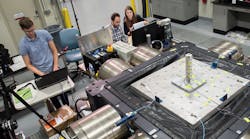Technology theft plagues not just commercial and industrial businesses but advanced military electronic systems as well. Attempts are made each year by foreign governments to steal technological resources and intellectual property (IP) worth billions of U.S. dollars, prompting the Department of Defense (DoD) to establish its Protecting Critical Technology Task Force. Although the technology theft usually occurs via the communications networks of contracting companies and their computer networks, the results are as devastating to the DoD as to the company.
The officer leading the DoD’s Protecting Critical Technology Task Force, Air Force Major General Thomas E. Murphy, admits that the technology theft is in the area of billions of dollars, although it is the negative effects on this country’s military capabilities that is a much greater concern: “The consequence is the erosion of the lethality of the joint force. You cannot put a price on that.” He explains that it may not be possible to prevent a country from hacking into a company’s computer network to steal technology, but it is important for the DoD to learn about the loss as quickly as possible.
When Murphy was put in charge of the task force, he was told to be aggressive and take whatever steps were necessary to prevent military technology theft, even when he realized that the Pentagon tends to take smaller, slower steps. “We tend to be more measured,” he says. “But I have a time-limited task force. I don’t have time to go slow and steady. And neither does our nation when it comes to losing our critical technology to China.”
The task force is a small-but-robust group, attempting to reach realistic goals within the next several years that include protection of the defense industrial base, protection for research and development efforts (including at laboratories and academic institutions), and using existing authority to prevent U.S. technology from being purchased by adversaries. An important part of these protection strategies is defining which technologies require protection. As Murphy explains: “If you treat everything as if it's most important, you protect nothing very well. You have to make those tough choices.”
Reference
C. Todd Lopez, “Task Force Curbs Technology Theft to Keep Joint Force Strong", November 26, 2019, U.S. Department of Defense.

